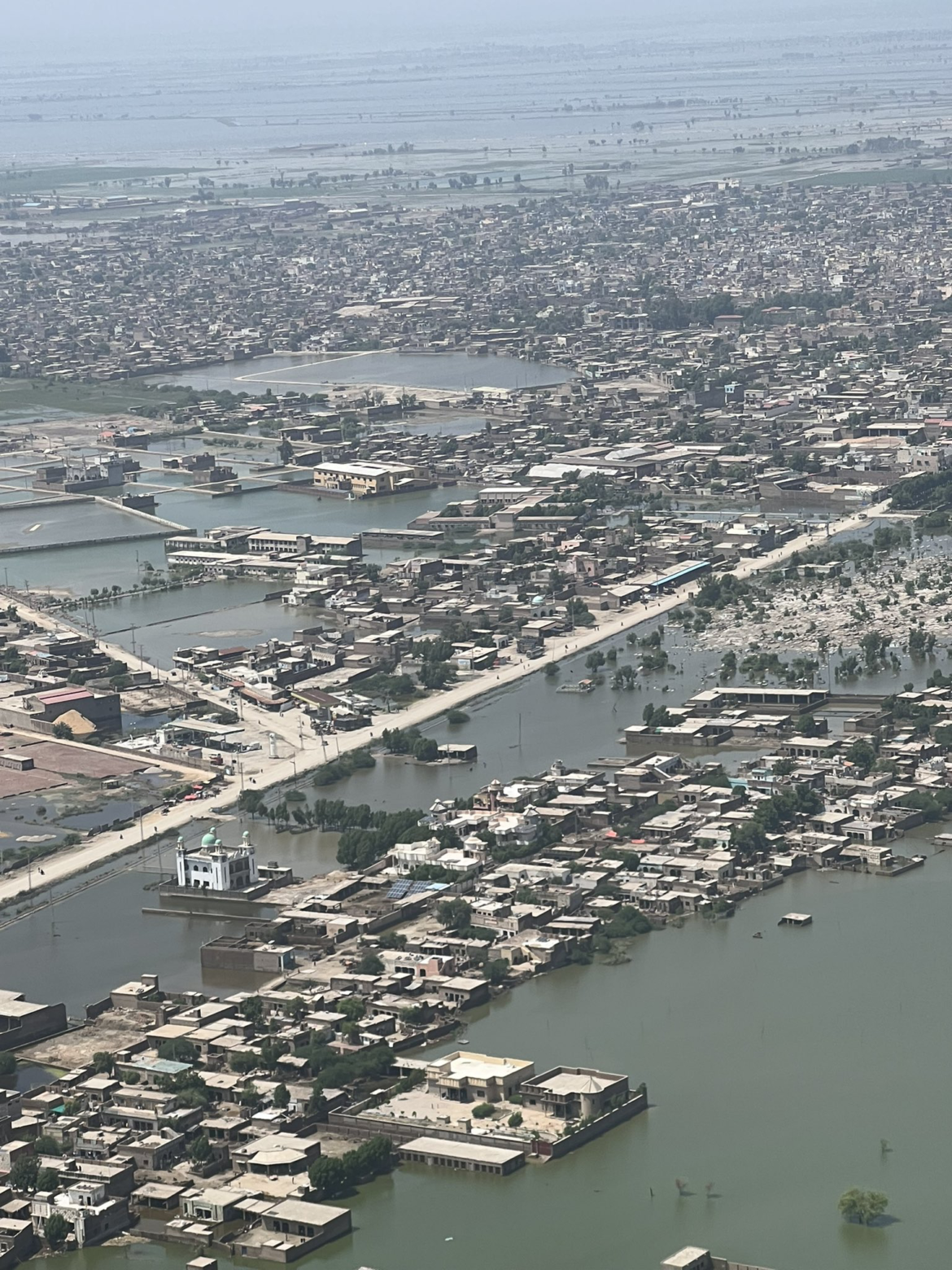It is 2022, and Pakistan is underwater again. Satellite imaging has found that a third of the country has experienced severe flooding, including the formation of a new 100km wide inland lake in the Sindh Province. As of October 23rd, 2022, the reported death toll sits at 1731 people. The disaster has also reportedly affected 33 million and injured 3554. However, Pakistan has endured deadly floods for decades before 2022; the country is naturally predisposed to flooding and has a long history of extreme weather due to monsoon rains. The 21st century is no exception. In 2010, 1985 people died between July and August due to extreme flooding in the Khyber Pakhtunkhwa, Punjab, and Balochistan regions. Pakistan has also reported significant death tolls due to flooding each year from 2001 to 2021. The extent of flooding has increased over time, as climate change causes more rainfall than average as well as glacial melting, and yet Pakistan’s approach has not changed.
While climate change worsens the frequency and impacts of natural disasters, it would be inaccurate to blame the human cost of the 2022 floods solely on global warming. The degree of damage that the flooding has caused is attributable to the lack of implemented domestic policies by the Pakistani government.
Pakistan has a recent record of inactive domestic flooding policies. The current ten-year National Flood Protection Program, meant to span from 2015 to 2025, acknowledges factors like climate change, deforestation, and the use of flood plains and presents solutions to mitigate them. Yet despite being drafted in 2015, approved in 2017, and submitted for financing in 2019, it has still not been implemented.
The World Bank gave the country $250 million for a sustainable water management program, but this project was suspended in 2019 due to issues in project management. The Rivers Protection Ordinance, which forbids construction on areas prone to flooding, has been unenforced. Floodplains, river banks, torrent hills, and flood channels have been illegally used for cropland and tourism buildings, intensifying the damages caused by flooding.
Additionally, little has been done to prevent deforestation along Pakistan’s watersheds. This is problematic as clearcutting leads to poor water quality, erosion, and the destruction of ecosystems that naturally absorb some of the impacts of floods. Pakistan has not put significant effort into implementing strategies and policies to withstand flooding.
This lack of preventative action created the 2022 flooding situation; a large volume of monsoon rain fell upon Pakistan, which had not changed much since the 2010 flooding disaster. As the water destroyed crops, houses, and infrastructure, victims had no choice but to seek shelter in camps for displaced people supplied by relief agencies and the government. Management failures continued then too. These camps — where people lived in temporary tents — did not provide adequate protection from animals, and many people reported being bit by snakes and stray dogs.
Camps are also vectors for the spread of disease. Since they are surrounded by still water, the risk of spreading waterborne and insect-borne illnesses is high. Though mobile medical facilities have been set up throughout Pakistan, reports of waterborne diseases keep rising. Malnutrition and the lack of safe drinking water are other concerns for victims of the floods.
Currently, government sources report that most temporary flooding relief camps are no longer in place and that most people have returned to their residences, although those residences may be uninhabitable. As a result, many Pakistani citizens report living in relatives’ homes or tents while they wait to receive financial assistance to rebuild their homes. The World Bank indicates that the floods could significantly heighten poverty levels. Since those regions which are most affected have lost their sources of income, like Balochistan and Sindh regions, financial aid to rebuild is not optional. Despite promises from the government to compensate those affected by the flooding, many are still waiting. Cash transfers for those who have lost relatives have been delivered quickly, but money for those whose property has been destroyed is delayed until the government can conduct damage appraisals. This will take time.
The UN warns that it may take up to six months for flood waters to recede entirely, meaning that appraising, rebuilding communities, and properly rehousing the population could be impossible until early 2023.
Pakistan’s history of policy stasis in response to major flooding in the 21st century has repeated itself, and the impact of inaction is especially visible in 2022. The effects of climate change further incentivize Pakistan to progress towards meaningful flooding management.
Domestic policies that could prevent such widespread devastation already exist; they only need to be appropriately implemented. The Rivers Protection Ordinance, an established part of domestic policy, just needs to be enforced. The National Flood Protection Program is already approved; it just needs to be financially backed and executed. These unenacted policies, if they remain as they are, will lead to the same issue of under-preparation and management failures during the next flood.
Edited by Sabrina Nelson
Ewa Bożerocka is an undergraduate student at McGill University, pursuing a B.A. Honours in Political Science, with a major in International Development. She is a staff writer for Catalyst.


Great work, Ewa!